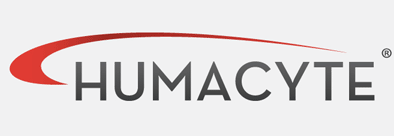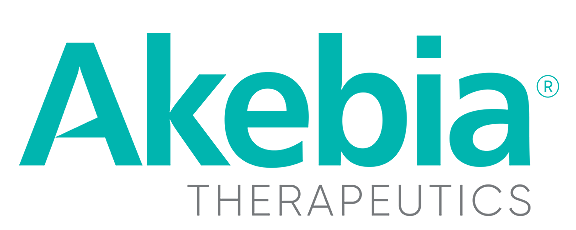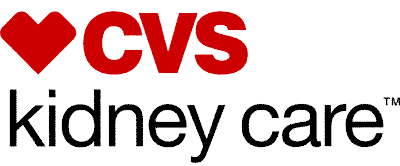What’s Going on with my Drug Discount Card?
By Jim Myers
Introduction
There is a new rule on Co-Pay Accumulators that could affect the way you use your drug discount cards, and it may be one of the best kept secrets in the United States.
CMS has recently confirmed a new rule that insurers have the option to use copay accumulator adjustment for their pharmacy benefit programs. Under the Centers for Medicare and Medicaid Services' Final Notice of Benefit and Payment Parameters for 2021, the final rule permits insurers to exclude the value of a pharmaceutical manufacturer’s copay support program from a patient's annual deductible and out of pocket maximums.
As a result, patients on speciality drugs lose big, as the new rule allows insurers to skip the deductibles and payers then reap the greatest benefits from plan, not patients.
The copay savings plan originally offered by drug manufacturers was designed to help patients afford expensive brand, and mostly newly developed medications or specialty drugs. The programs applied the cost of these expensive drugs to the patient's deductible on their insurance to help offset the out-of-pocket costs. This is a great deal for patients!
However, by 2018, insurance companies and pharmacy benefit managers (PBM) began using copay for programs which prohibit all copay payments from a drug card to be applied to a patient's deductible and annual out of pocket costs. The new ruling from CMS allows insurers to implement these programs without the restriction that they may only apply where there is a generic alternative medication.
"This formal ruling states that insurance plans may choose to prohibit manufacturer contributions from counting toward a patient's annual cost-sharing amount. Prior to this ruling, CMS had not permitted accumulator programs to include brand drugs without a generic. However, the new ruling has no such restriction."
https://www.goodrx.com/blog/copay-accumulator-programs-cms-ruling/
What is a copay accumulator program?
The drug manufacturer offers these copayment offset programs through a copay card or coupon. The card covers the patient's out of pocket costs for the brand named medication by applying those costs to a brand name drug to the patient's deductible in his commercial insurance. Such a program is not available to someone enrolled in government programs like Medicare Part D. Once the patient's deductible and out of pocket maximum are reached, the plan pays for all subsequent prescriptions.
Copay Accumulators does not count towards the patient's deductible or out-of-pocket maximums, but only a certain amount of coverage is allowed on the card or in the plan. Then the patient is on his own to pay for the medicine once that maximum is reached. The end result is the costs to the insurance carrier is reduced and the burden for payment is shifted to the patient and drug manufacturer.
The use by consumers of these copay support programs has been growing. The Drug Channels Institute estimates that in 2019, manufacturers spent $15 billion dollars on these cost- savings programs.
As you can imagine, a patient's out-of-pocket costs can be in the thousands of dollars for these cutting edge, newly developed drugs, that are single source therapies with no generics. These programs came into existence so patients don't skip Cancer or HIV therapies. This is why states like Arizona, Illinois, Virginia and West Virginia have banned or restricted the use of copay accumulators in their states. Similar bills are pending in a host of other states, including Connecticut, Indiana, Kentucky and North Carolina.
Not surprisingly, An analysis published in 2017 found that for drugs that face generic competition, coupons increased sales by 60% and raised spending by $2.7 billion for 23 selected drugs over the five years studied.
Alternatively, a 2018 analysis predicted that copay accumulators could save payers and PBMs money but also create adherence problems, because patients would struggle to pay the maximum out-of-pocket expenses without some form of assistance, leading to a higher abandonment rate at the pharmacy counter. https://www.pwc.com/us/en/industries/health-industries/library/insurance-copay-coupons-paused.html.
How does this happen?
What normally happens is the patient presents to a specialist with a unique and prolonged medical problem, for example, long time, reoccurring psoriasis. The patient has tried everything else, so the doctor prescribes a newer, cutting edge drug to help the patient. Because it is a new drug, there are research and development costs the manufacturers wishes to get back. The patient cannot afford to pay the costs of the drug, but desperately needs the help. The doctor's office then recommends the copay card or program.
Let's use an example from the Patient Access Network of a medication that costs $20,000 a year for Jane. Without a copay card but with insurance, Jane pays $5,000/yr, her carrier picks up $15,000. With a co-pay card, Jane pays $3,500, the co-pay card pays $1,500 and the carrier pays $15,000. With the co-pay card and a co-pay accumulator, Jane pays $5,000, the co-pay card pays $1500, and the insurer pays $13,500.
Why Did Insurance Companies Put This Plan in Place?
This is a method to curb the carrier's prescription spending. The theory is the Co-pay Accumulator Program will encourage patients to use cheaper generic or substitute as opposed to the cutting edge medications their doctors may prescribe. The problem with many of these necessary medications for the patient is that all too frequently, there are no cheaper alternatives available. In truth, insurace companies are also trying to pressure drug companies to lower drug prices and the view copay cards as a way drug companies can keep patients on more expensive medications. The truth is that the patients are stuck in the middle of a power struggle between Big Pharma and Big Insurance in the fight for who will control drug prices. While drug manufacturers and insurance companies fight for control, ultimately the patients suffer.
Which Insurance Companies & PBMs Are Using these programs?
It is always best to check with your insurance provider and the drug manufacturer providing you card, but here are a few of the providers I have found in my research:
1. Blue Cross Blue Shield;
2. Cigna;
3. CVS Caremark;
4. UnitedHealthcare.
Caution is needed here because different carriers use different names for their copay programs, like "Coupon Adjustment/Benefit Plan" or "Out of Pocket Protection Program." Please remember no matter what they call it, it is the very same program that operates the same way: they don't apply the balance to your deductible and when the money on the card runs out, you may have a surprise amount to pay, and with that medicine, from that day forward, you are on your own.
Where Can You Go To Check If You Are Affected By Co-Pay Accumulators?
Call your insurance company or the PBM that covers your specialty medications. Your insurance company may have sent you a letter notifying you, but then again they may not have. You may also check with their website online.
Also look at your Explanation of Benefit in your policy or on your co-pay card to see how the card's contributions will be applied.
What do you do if you are affected?
First, call your insurance company or PBM and ask them any questions you have about the Co-Pay Accumulator. If you are unable to pay to fill your prescription, the carrier may help you find other solutions like a patient assistance program.
Finally, you may also speak to your physician to see if an alternative, less expensive medicine is available that will suit your needs.
Conclusions
You need to check and see if your copay card/coupon comes with a co-pay accumulator or not. Cases have been reported where the balance of the copay was not applied to the patient's health insurance deductible and then the patient went from paying a very small amount a month for medication to paying thousands of dollars a month for the same medicine prescribed by his doctor.
References
1. Copay Maximizers Are Displacing Accumulators—But CMS Ignores How Payers Leverage Patient Support
2. Copay Accumulator Programs: What Patients Should Know
https://www.goodrx.com/blog/copay-accumulator-programs-cms-ruling/
3. 2021 Health Plans Granted Leeway To Limit Consumers’ Benefit From Drug Coupons
https://khn.org/news/2021-health-plans-granted-leeway-to-limit-consumers-benefit-from-drug-coupons/
4. Copay Accumulators – What They Are and What They Mean For Your Prescriptions
https://www.hepb.org/blog/copay-accumulators-mean-prescriptions/
5. Copay Accumulator Programs: What They Are And How They Might Impact Your Out-Of-Pocket Costs
6. COPAY ACCUMULATORS: HOW INSURERS GET PAID TWICE
https://patientsrising.org/copay-accumulators-paid-twice/
7. Understanding Both Sides of the Copay Accumulator Debate
8. Co-pay Accumulator Programs: Behind the Controversy
9. Federal rule will leave decision on copay assistance programs up to employers
10. With Federal Nod Consumers Could Lose The Boost They Get From Drug Coupons
https://khn.org/news/with-federal-nod-consumers-could-lose-the-boost-they-get-from-drug-coupons/
11. HHS Final Rule a Win for Copay Accumulator Adjustment Programs
12. The Cost-Shift Conundrum of Copay Accumulator Programs




























